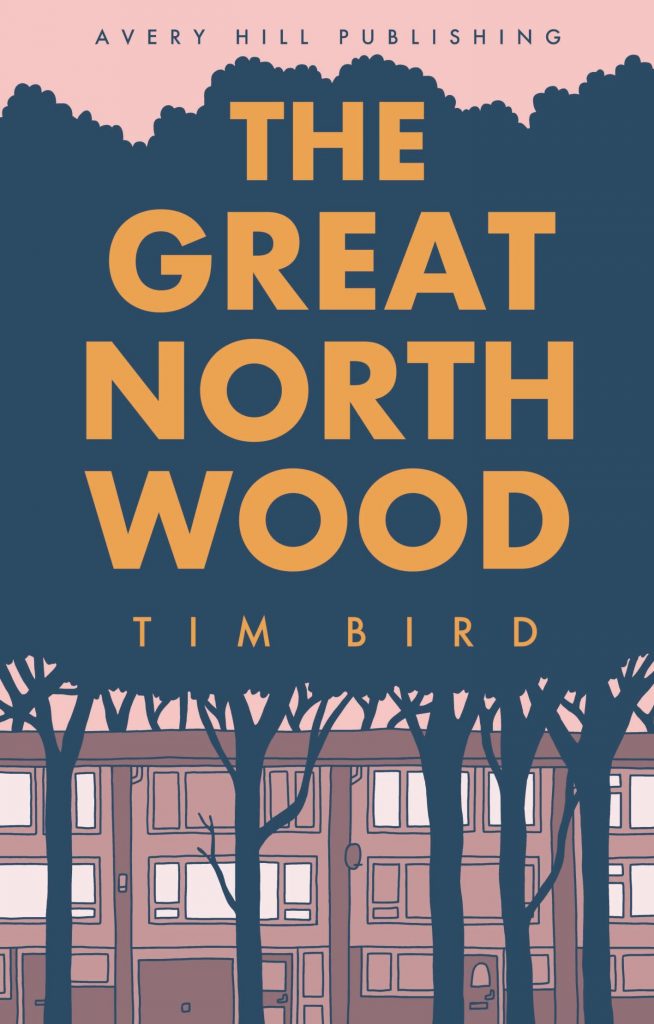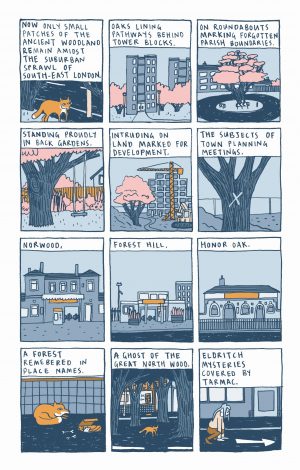Review by Ian Keogh
In the 13th century a vast forest referred to as the Great North Wood occupied must of what is now South-East London. It’s northerly boundary was Deptford, and it ran to the Selhurst area of current day Croydon in the South, but barely a few patches remain today. In The Great North Wood Tim Bird explores the history of the area as a microcosm of all development, highlighting how echoes remain in occasional place names such as Forest Hill and Honor Oak, and retelling legends. This is via a series of short tales as fragmentary as the surviving patches of woodland, evoking different moods, some matter of fact, some wipsy and hallucinatory, but all connecting with what’s been lost rather than what’s been gained.
Some of these stories are revelatory. Under the innocuous name of Pear Tree House a government control centre to be used in the event of a nuclear attack was constructed in the 1960s at Gypsy Hill, so named for being a place where people once visited from miles around to have their fortunes told. Other stories are charming historical interludes, such as the protection afforded a local doctor after doing a favour for the tent dwelling community in the woods.
Bird uses a fox as a motif throughout, a common predator in the ancient woods, and superbly adapted to an urban scavenging life in the present day. It’s simple cartooning using very little colour, none of it green, yet still able to evoke what the forest was, and as a final chapter, what it could be again. In this it brings to mind Robert Crumb’s twelve (and later fifteen) panel poster A Short History of America.
A quiet, contemplative and informative read, The Great North Wood supplies its pastoral objective in charming detail.





